19 Cultural Foods to Add to Your Bucket List
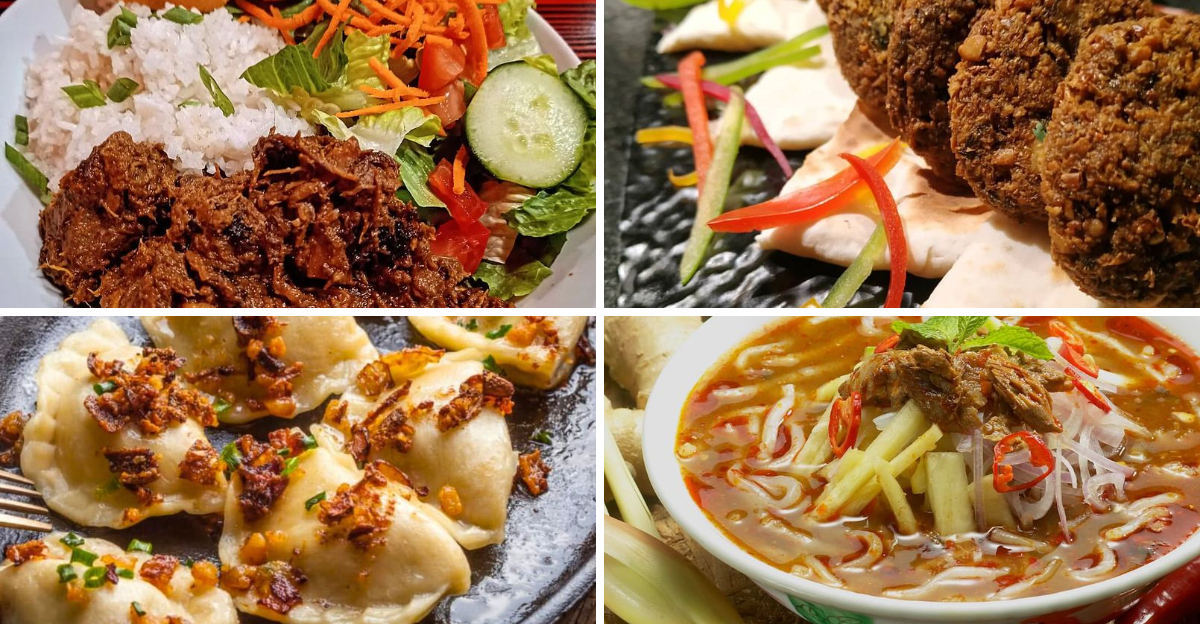
Embarking on a culinary journey across the world offers an insight into diverse cultures. This list curates an eclectic mix of dishes, each with its different story and flavor profile. From the bustling streets of Asia to the serene landscapes of the Middle East, these foods invite you to explore traditions, history, and practices. Whether you’re a seasoned foodie or a curious beginner, these 19 cultural foods will intrigue your palate and enrich your understanding of global culinary foods.
1. Biryani from India
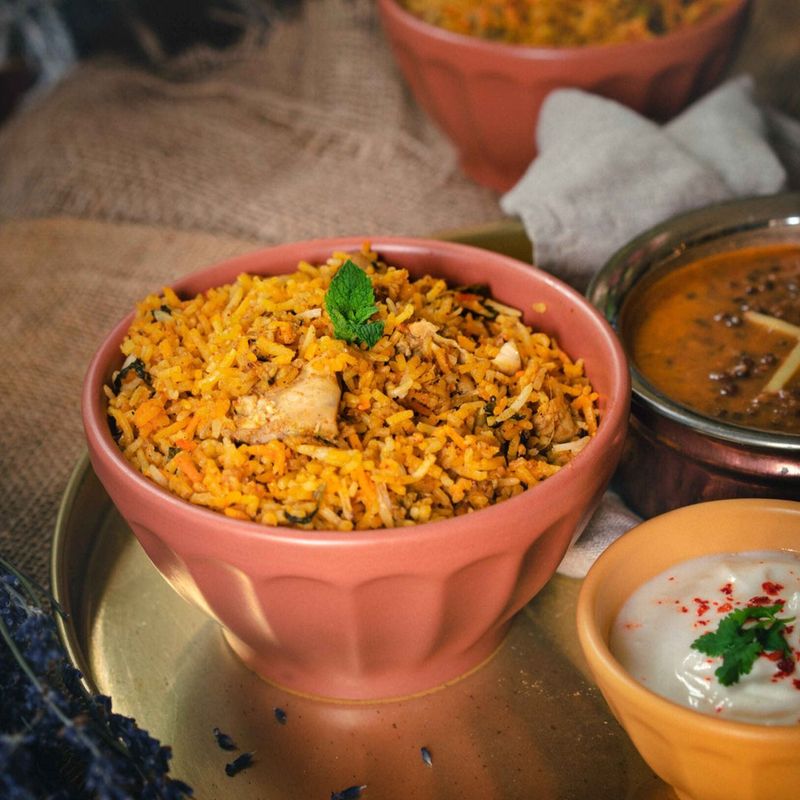
Biryani is a flavorful rice dish that originates from the Indian subcontinent. It’s known for its rich aroma and colorful presentation. The dish typically combines basmati rice, chicken, or beef, and a blend of spices such as saffron, cumin, and cardamom. Often garnished with fried onions and boiled eggs, biryani is a staple at special gatherings and family meals. Each region in India has its own version, like the spiced Hyderabadi or the milder Lucknowi biryani. Preparing biryani requires careful timing and layering, ensuring each grain of rice absorbs the flavors. The dish is usually served with raita, a yogurt-based side, balancing the spices beautifully.
2. Falafel from Middle East
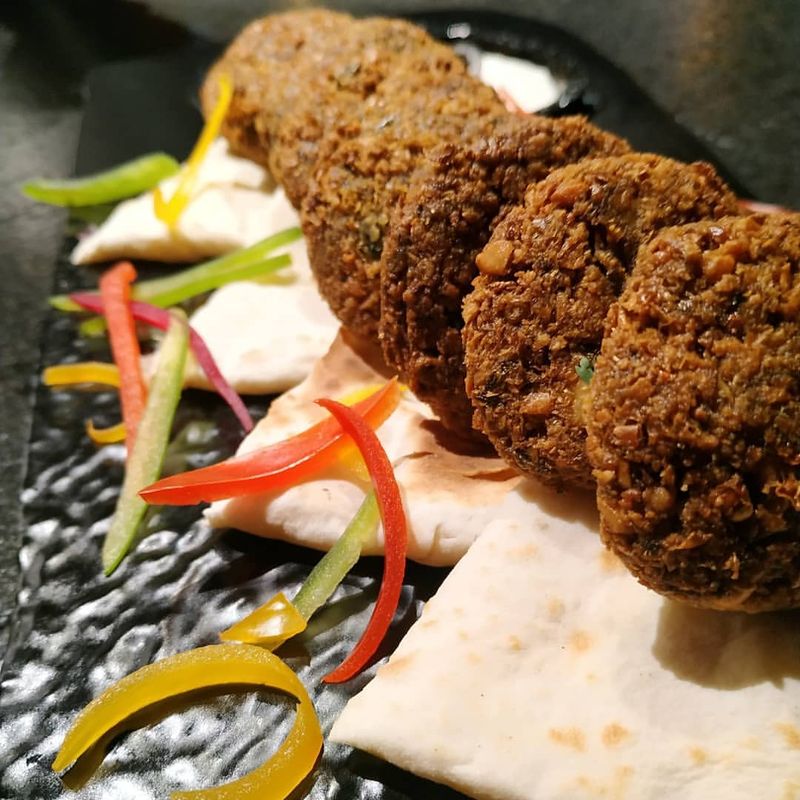
Falafel is a well-loved street food originating from the Middle East, known for its crispy exterior and soft, flavorful interior. These deep-fried balls are made from ground chickpeas or fava beans, blended with herbs and spices like coriander and cumin. Often served in pita bread with accompaniments like hummus, tahini, and fresh salad, falafels make for a hearty meal. They are a common staple in vegetarian cuisine and are appreciated for their high protein content. Making falafel from scratch involves soaking and grinding the beans, forming them into balls, and frying until golden. This process creates a satisfying crunch and an inviting aroma.
3. Kimchi from Korea
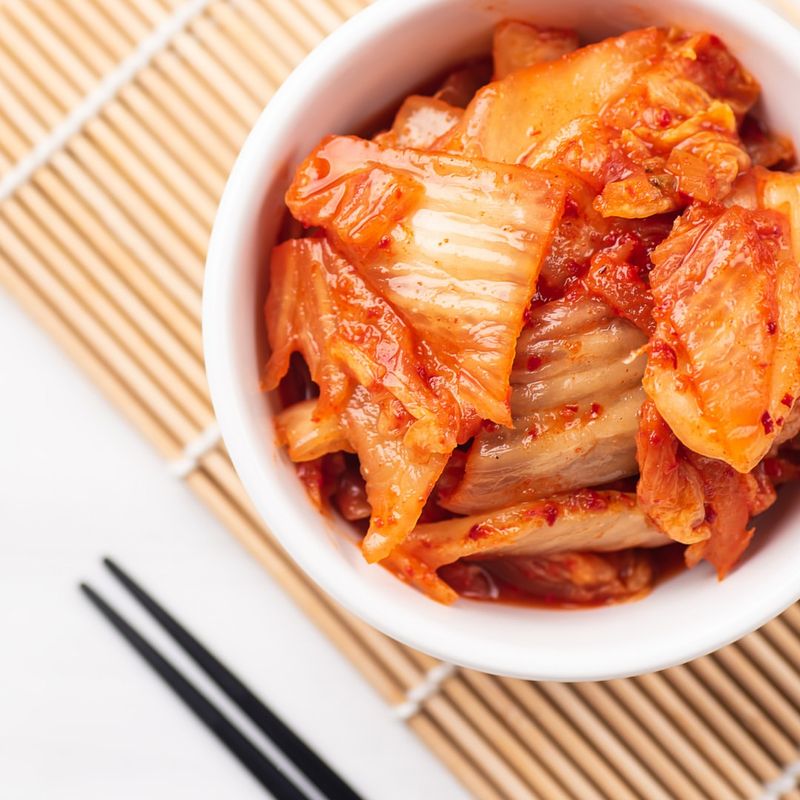
Kimchi is Korea’s iconic fermented dish, valued for its complex flavors and nutritional benefits. It’s typically made from napa cabbage or daikon radishes, fermented with chili pepper, garlic, ginger, and fish sauce. This dish is served as a side with almost every Korean meal, reflecting the country’s deep culinary tradition. The fermentation process gives kimchi its distinct tang and enhances its probiotic qualities. Making kimchi involves a step-by-step salting, seasoning, and fermenting process, which can take days or even weeks. Kimchi’s spicy and sour profile adds depth to dishes like fried rice or stew, making it a versatile ingredient in Korean cuisine.
4. Sushi from Japan
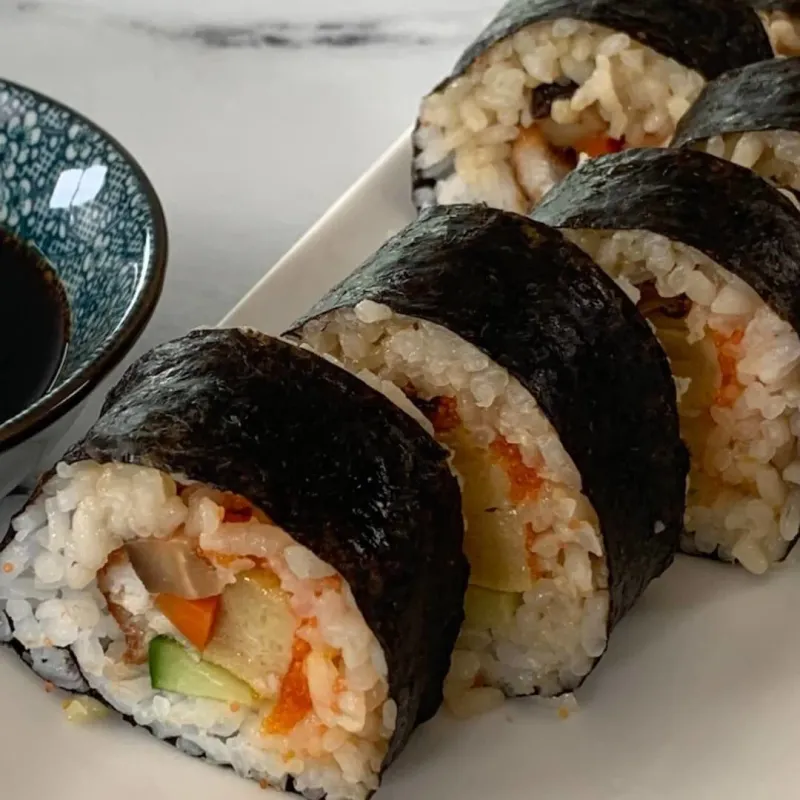
Sushi is a classic Japanese dish that showcases simplicity and precision. It typically consists of vinegared rice, fresh seafood, and vegetables, wrapped in seaweed or rolled into bite-sized pieces. Varieties include nigiri, sashimi, and maki rolls, each offering a distinct texture and taste. Sushi emphasizes the freshness of its ingredients, with fish like tuna, salmon, and eel being popular choices. The craft of sushi-making involves careful slicing and assembling, often accompanied by soy sauce, wasabi, and pickled ginger. Sushi is enjoyed worldwide, but experiencing it in Japan offers a deeper appreciation for its tradition and craftsmanship.
5. Shakshuka from North Africa
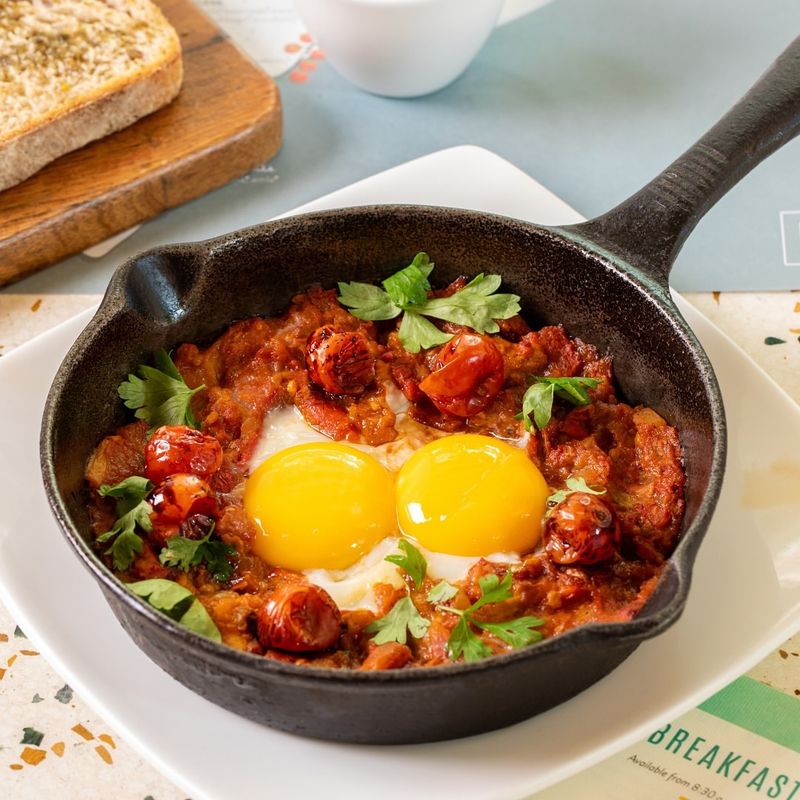
Shakshuka is a rich and flavorful dish with roots in North African cuisine. It features poached eggs nestled in a seasoned tomato and bell pepper sauce, infused with cumin, paprika, and chili. Often served for breakfast or brunch, shakshuka is enjoyed with crusty bread for dipping. The dish’s bold colors and robust flavors make it both visually appealing and deeply satisfying. Preparing shakshuka involves simmering the sauce until thick, then poaching the eggs gently. This process results in a comforting meal that’s balanced in texture and taste. Shakshuka’s popularity has grown, recognized for its simplicity and depth of flavor.
6. Tagine from Morocco
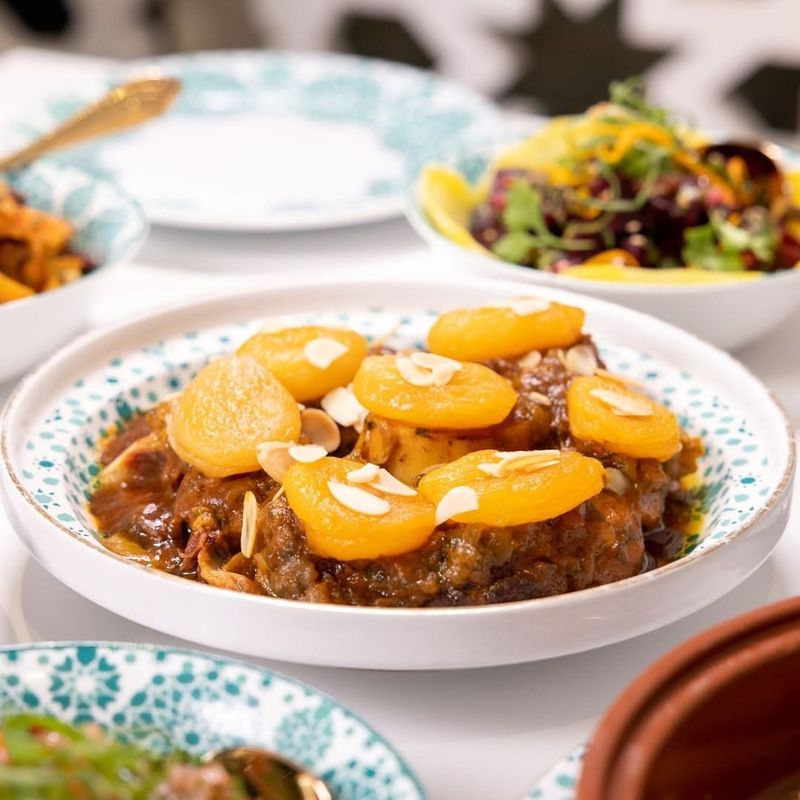
Tagine is a slow-cooked stew named after the earthenware pot it’s prepared in, originating from Moroccan cuisine. The dish combines meats like lamb or chicken with fruits, nuts, and spices such as cinnamon and saffron. This blend of flavors creates a savory-sweet dish, often served with couscous. Tagine’s unique cooking method involves slow simmering, allowing the ingredients to meld together, developing a rich and aromatic taste. The conical lid of the tagine pot helps retain moisture, enhancing the stew’s depth of flavor. Enjoying a tagine in Morocco offers a true experience of its culinary heritage.
7. Ceviche from Peru
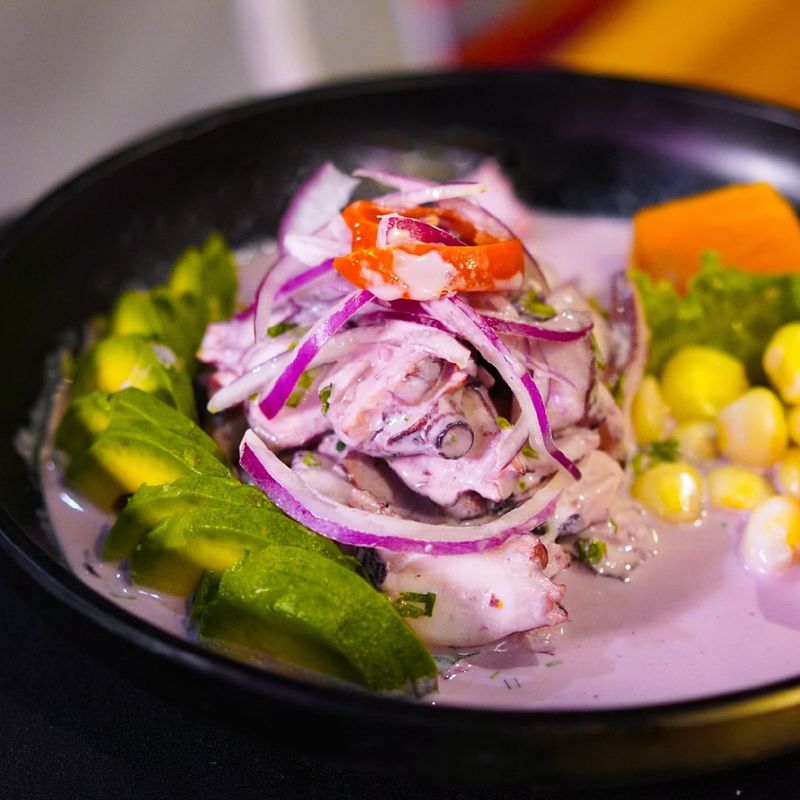
Ceviche is a fresh and tangy dish that represents Peruvian cuisine. It consists of fresh fish or seafood marinated in citrus juices, primarily lime, which naturally “cooks” the proteins. Red onions, cilantro, and chili peppers are added for taste and texture. Ceviche is typically served with corn, sweet potatoes, or plantain chips, offering a delightful contrast. The dish’s simplicity allows the freshness of the ingredients to shine, making it a popular choice for seaside dining. Preparing ceviche involves selecting high-quality fish and balancing the acidity with other elements. Ceviche’s bright flavors capture the essence of coastal Peru.
8. Borscht from Ukraine
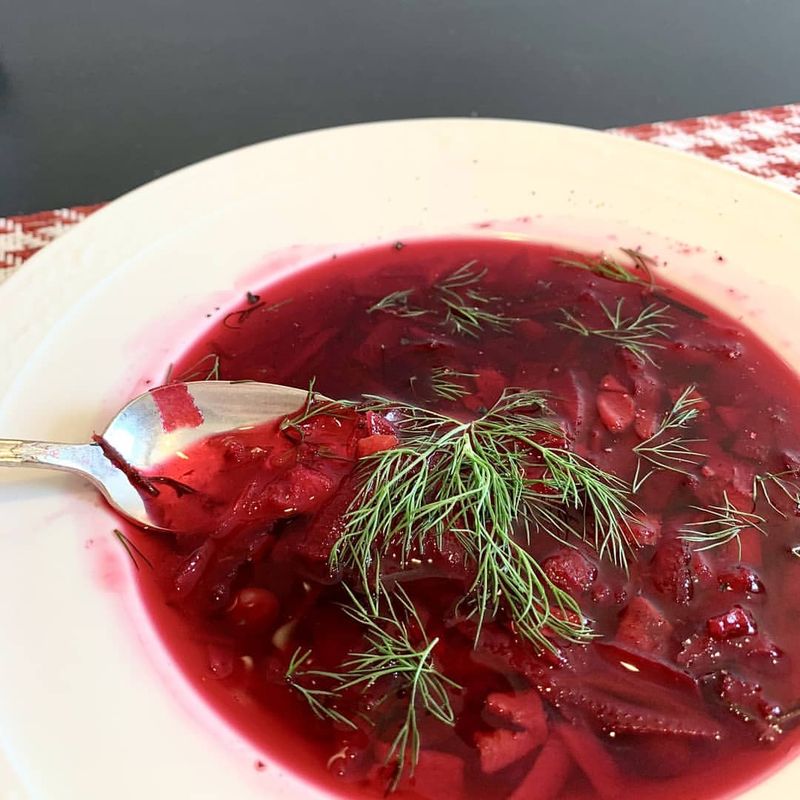
Borscht is a comforting beet soup that is popular in Ukrainian cuisine. Its deep red color comes from beets, the primary ingredient, and it’s often enriched with cabbage, potatoes, and meat like beef or chicken. Borscht is traditionally served warm, with a spoonful of sour cream and a sprinkle of dill, enhancing its earthy flavors. It represents home-cooked meals and is a staple in many Eastern European kitchens. Preparing borscht involves simmering vegetables and broth together, allowing the flavors to blend into a hearty soup.
9. Poutine from Canada

Poutine, a well-known Canadian dish, combines crispy fries, cheese curds, and a flavorful gravy. This dish is deeply rooted in Quebecois food culture and is widely enjoyed across Canada. The combination of textures, from crispy to creamy, makes poutine a satisfying comfort food. Each bite delivers a delicious mix of flavors, making it a favorite among locals and visitors alike. For those exploring Canada, tasting authentic poutine is a nice experience.
10. Pho from Vietnam
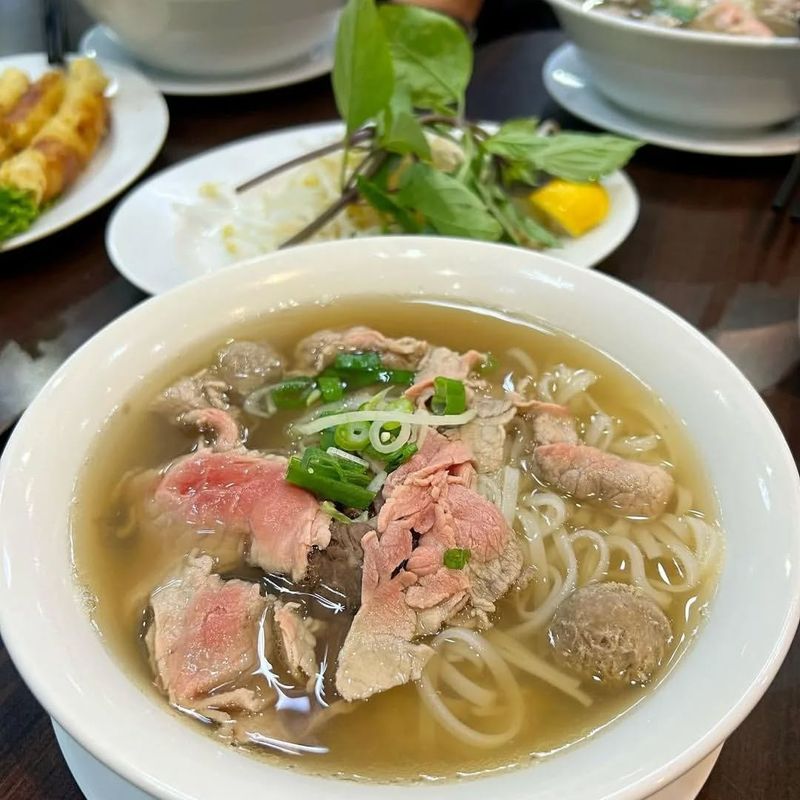
Pho is a fragrant and nourishing noodle soup that is an essential part of Vietnamese cuisine. It features a clear broth, rice noodles, and tender slices of beef or chicken, topped with fresh herbs like basil and cilantro. Lime and chili add a refreshing touch. Pho is often enjoyed in the morning, offering a light yet fulfilling start to the day. Preparing pho requires slow-simmering bones and spices for hours to create a deep, rich broth. The balance of flavors makes pho a widely loved dish, reflecting the warmth of Vietnamese hospitality.
11. Pho from Cambodia
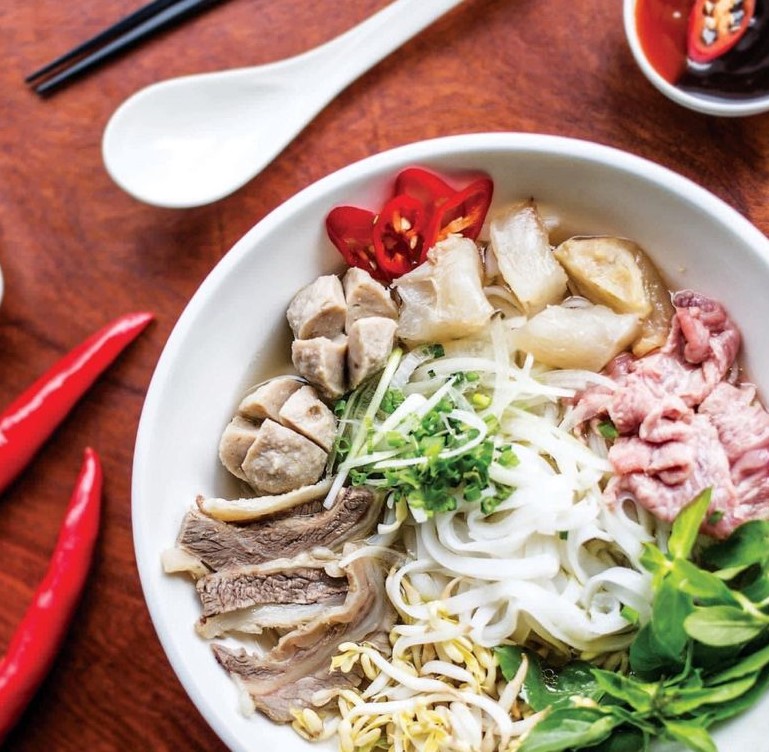
Kuy Teav is a Cambodian noodle soup that shares similarities with pho but carries its own distinctive character. Made with a clear, flavorful broth, it features rice noodles, beef or pork, and fragrant herbs. The broth is infused with star anise and cinnamon, giving it a mild, aromatic depth. Fresh bean sprouts and lime enhance the overall taste. Kuy Teav is commonly enjoyed as a breakfast dish and is a favorite among street food lovers. Its light flavors make it a comforting choice.
12. Peking Duck from China
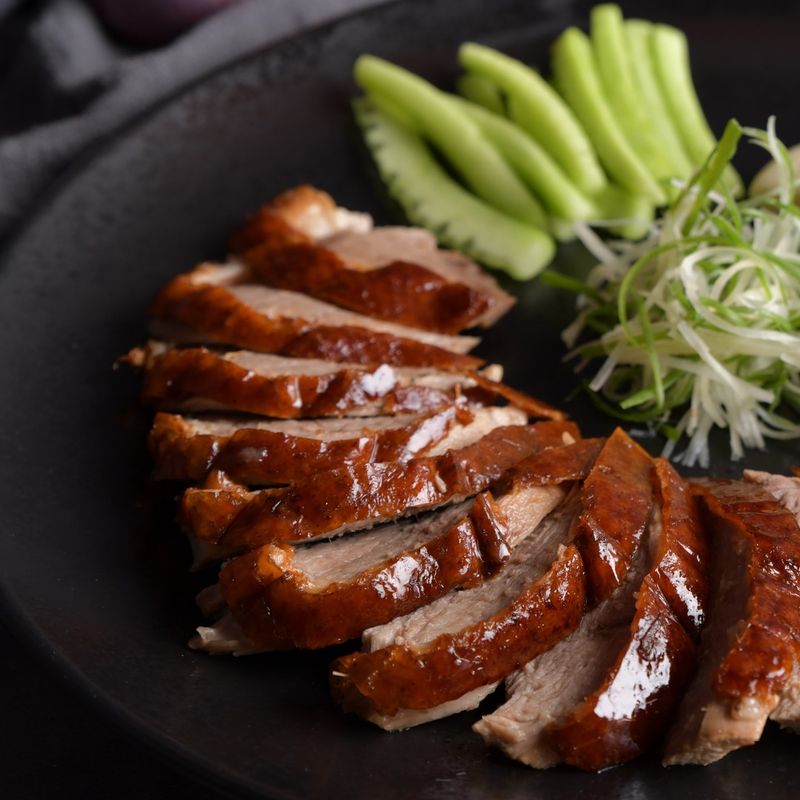
Peking Duck is a well-known dish from Beijing, China, appreciated for its thin, crispy skin and tender meat. The preparation involves air-drying the duck before roasting it to a golden finish. Traditionally, it is served with thin pancakes, hoisin sauce, and sliced scallions, allowing diners to create their own wraps. Peking Duck highlights Chinese culinary skill, with its precise cooking method and presentation. Enjoying this dish in China provides an authentic experience, showcasing its deep-rooted tradition. The combination of crispy skin, tender meat, and sweet-savory sauce makes it a dish worth trying.
13. Laksa from Malaysia
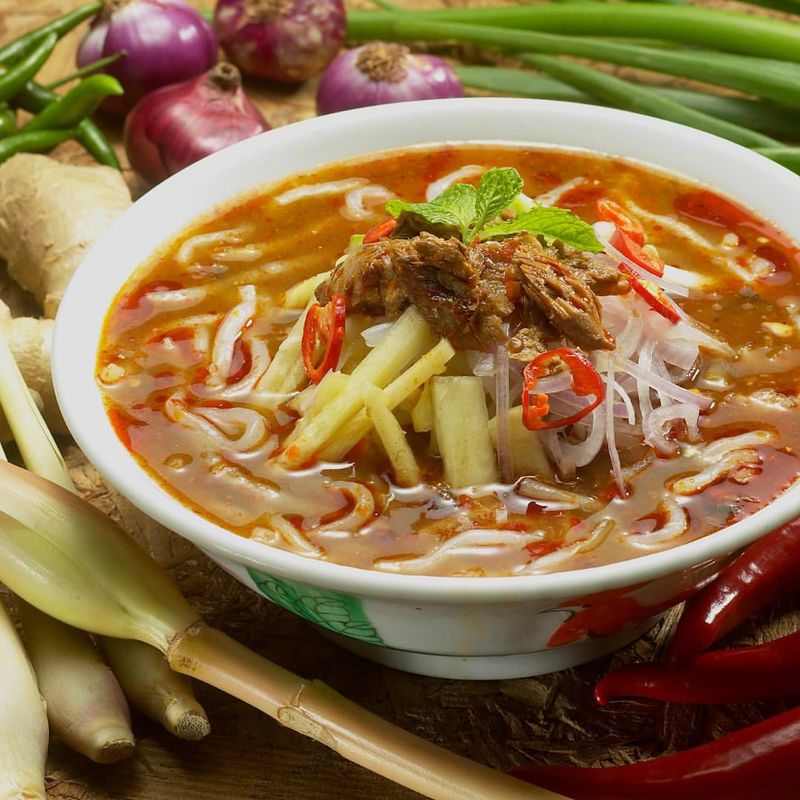
Laksa is a Malaysian noodle soup known for its creamy, spiced broth and aromatic ingredients. It blends coconut milk, curry paste, and tamarind to make a rich and satisfying dish. The soup is served with rice noodles and topped with tofu, and boiled eggs, adding layers of taste and texture. Laksa reflects Malaysia’s diverse food influences, combining Malay, Chinese, and Indian flavors. Each bowl delivers a comforting mix of tangy, spicy making it a popular street food option.
14. Fattoush from Levant
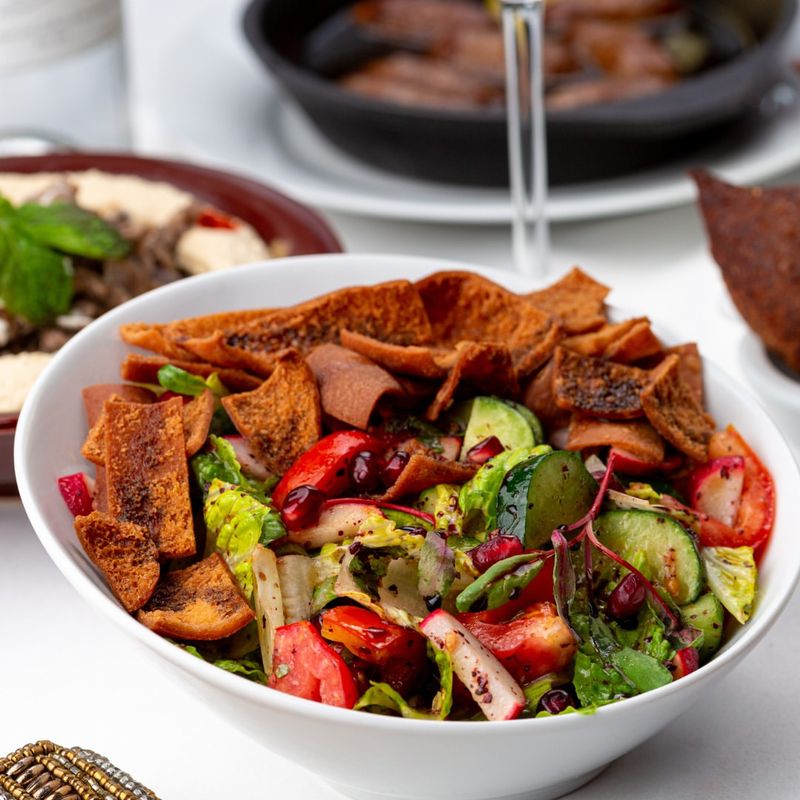
Fattoush is a fresh, colorful salad originating from the Levant region, known for its ingredients and crisp textures. It combines mixed greens, tomatoes, cucumbers, radishes, and crispy pieces of pita bread, all tossed in a lemony sumac dressing. Fattoush is a staple in Middle Eastern cuisine, offering a light and refreshing contrast to heartier dishes. The salad’s preparation is simple yet effective, highlighting the natural flavors of its ingredients. The crispy pita adds crunch, while the sumac provides a hint of tartness. Fattoush is often enjoyed as a side dish, adding a bright touch to any meal.
15. Pierogi from Poland
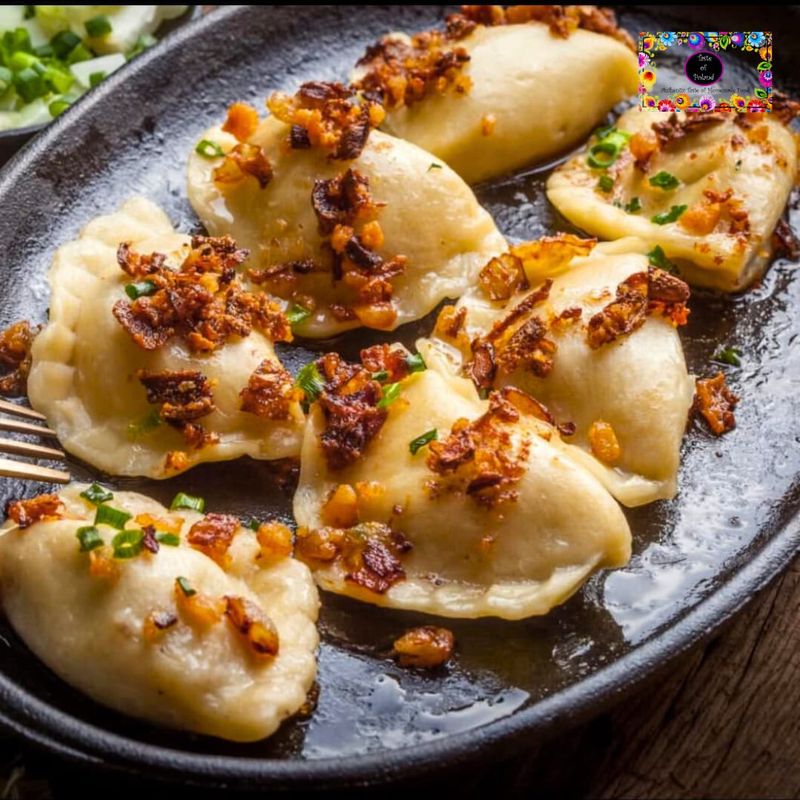
Pierogi are soft dumplings that are an essential part of Polish cuisine. These dough pockets are filled with ingredients like cheese, potatoes, and sometimes meat or fruit, offering a variety of flavors. They can be boiled, pan-fried, or baked, each method enhancing their taste in a different way. Pierogi are often prepared for special gatherings and family meals, bringing people together over a shared dish. For those exploring Poland, tasting homemade pierogi provides a delicious introduction to the country’s culinary traditions.
16. Rendang from Indonesia
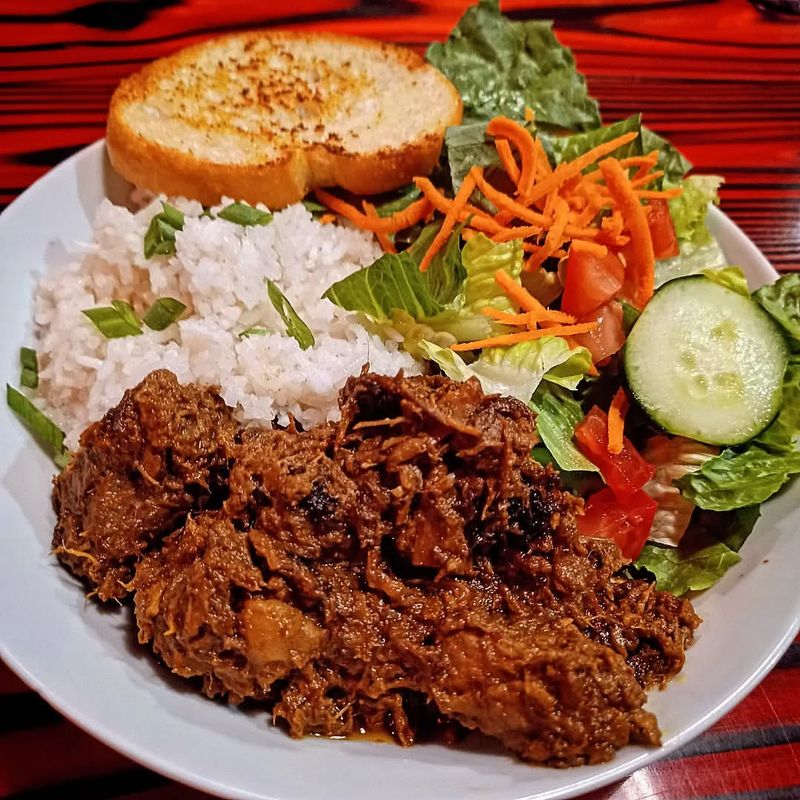
Rendang is a slow-cooked Indonesian dish featuring tender beef simmered in coconut milk and aromatic spices. This dish is often reserved for special occasions, reflecting the depth of Indonesian cooking techniques. The preparation involves simmering the meat until the liquid evaporates, leaving behind a thick, flavorful sauce. This results in beef that is deeply seasoned and rich in taste. Rendang is usually served with rice, which helps balance its bold flavors. The combination of spices like lemongrass, ginger, and turmeric gives it a distinctive taste.
17. Dolma from Turkey
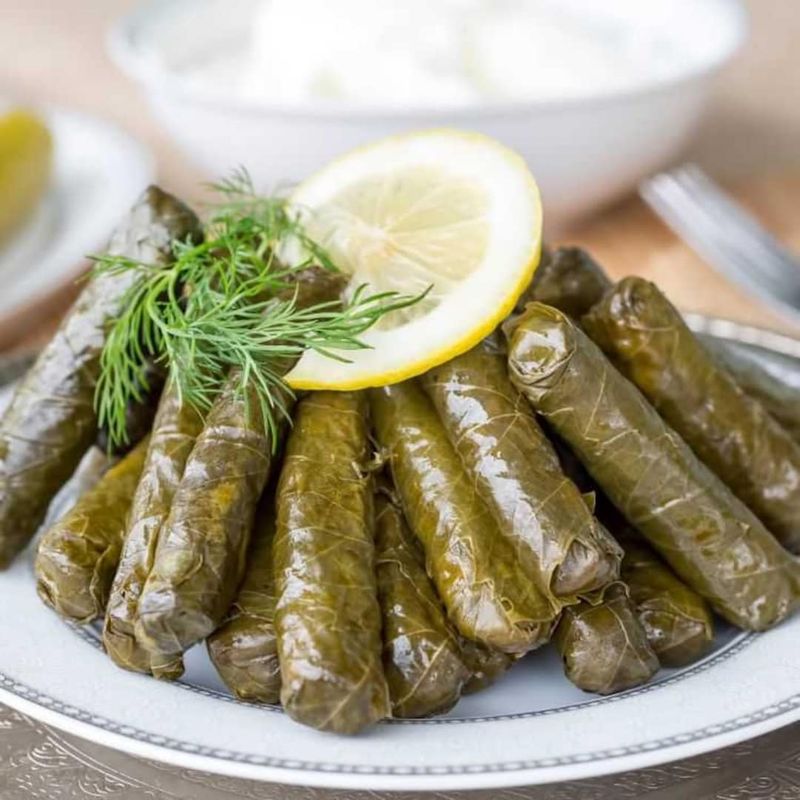
Dolma is a loved dish in Turkish cuisine, consisting of grape leaves wrapped around a seasoned rice filling. These bite-sized rolls are often served as appetizers or part of a shared meal. The preparation involves carefully rolling the filling inside the leaves before cooking them in a light broth. This method ensures a tender texture and balanced flavor. Dolma is a common home-cooked dish, passed down through generations. Enjoying dolma offers a glimpse into Turkey’s culinary heritage, highlighting its use of fresh herbs and grains.
18. Feijoada from Brazil
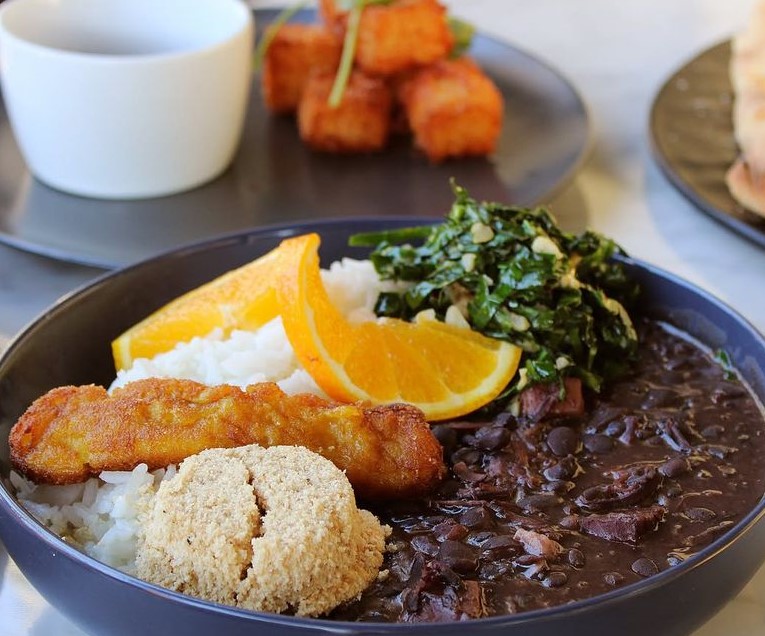
Feijoada is a hearty stew from Brazil, made with black beans and an assortment of meats. It is traditionally prepared for large gatherings and is served with rice, collard greens, and orange slices. The cooking process involves slow-simmering the beans and meats together, allowing the flavors to blend into a rich and satisfying dish. Feijoada showcases Brazil’s diverse influences, blending indigenous and Portuguese cooking styles. Its deep flavors and comforting texture make it a liked dish in Brazilian homes.
19. Baklava from Turkey

Baklava is a delicate and sweet pastry that is an important part of Turkish cuisine. It consists of layers of thin filo dough, filled with chopped nuts and sweetened with honey or syrup. The pastry is baked to a brown crisp, offering a satisfying contrast between flaky layers and the rich filling. Baklava is often enjoyed with a cup of strong tea, complementing its sweetness. The preparation involves layering and baking with precision, ensuring the syrup soaks through without making the pastry too heavy. Baklava’s delicate balance of sweetness and crunch makes it a widely appreciated dessert.
